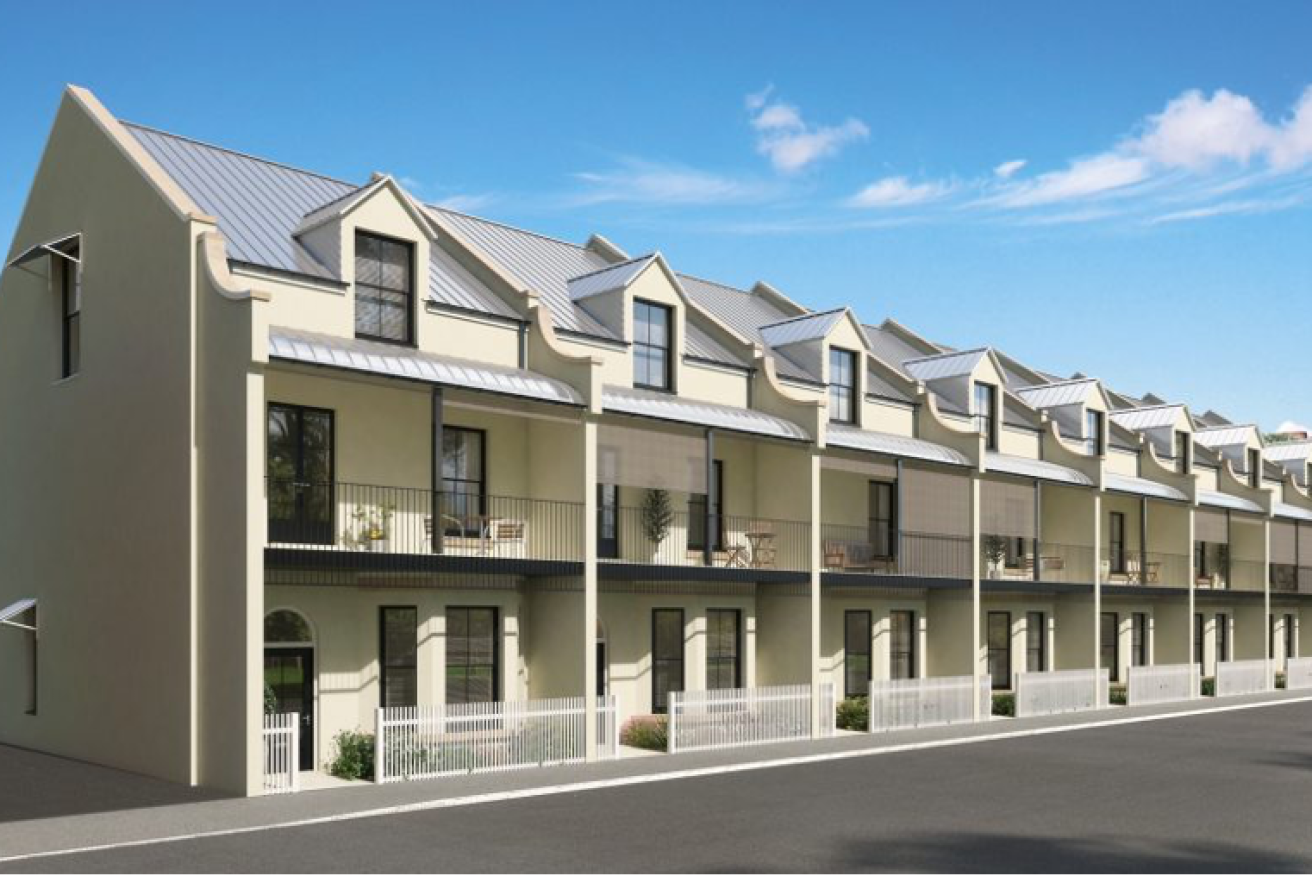Building sustainable housing at a neighbourhood scale
To realise sustainable neighbourhoods, Australia needs a more visionary approach to integrated strategic planning with help from strong local government, argues Stefanie Dühr.

The Prince’s Terraces Adelaide at Bowden are an example of a sustainably designed neighbourhood. Image supplied
Australia’s commitments to principles of sustainable development and international targets to curb climate change have so far done little to prompt a rethinking of urban development processes.
Trends continue apace with worsening urban sprawl, car-dependent suburbs, loss of natural habitats and poor access to social infrastructures.
Despite the recent modest amendment to the National Construction Code, the energy performance of Australia’s housing continues to badly fall behind that of other advanced economies, and access to decent and affordable homes is a distant dream for many.
“Eco-neighbourhoods” that place sustainability objectives at the core of integrated community-scale planning remain experiments in Australia, while mainstream development approaches continue unsustainable trends, with considerable negative socio-economic and environmental impacts.
In just published research funded by the Australian Housing and Urban Research Institute, we investigated the challenges that built environment professionals in Australia experience when planning, designing and implementing sustainable housing developments at the neighbourhood scale.
The research also examined strategies and policy levers employed in case study eco-neighbourhoods from across Australia and Europe.
Neighbourhood scale benefits and barriers
Neighbourhoods are clusters of residences, sometimes in conjunction with other land uses, and with shared infrastructure. The neighbourhood scale offers sustainability gains and economies of scale for decentralised systems such as water management and renewable energy production.
The opportunities for integrated land-use and transport planning and for biodiversity planning are considerably greater if planning is done at the neighbourhood scale than for the traditional processes of individual lot development. Moreover, the neighbourhood scale can facilitate the strengthening of communities and contribute to fostering sustainable lifestyles of its residents through providing space for shared facilities or repair cafes – places where people can meet to fix items that are popular throughout Europe.
Our research found that while awareness among built environment professionals about the value of planning for sustainability at the neighbourhood scale is growing, there are considerable barriers to realising this.
The fragmentation of policy and regulatory frameworks for sustainable urban development, as well as weak mechanisms for planning at the neighbourhood scale, are key factors.
Housing developments are usually designed and realised at the scale of individual building sites, with weak mechanisms for planning at the neighbourhood scale
Those who have succeeded in realising their vision for more integrated and low-impact communities have reported considerable time delays, ballooning costs and other challenges that have often resulted in a watering down of the initial ambitions for the project.
Current policy frameworks, planning instruments and traditional development processes – that do not have a project leader placing sustainable neighbourhood design at the core – are insufficient to prompt the consideration of such principles in urban planning, design and implementation processes.
Not meeting the goals
Ecologically Sustainable Development (ESD) has been a goal for urban and regional planning in Australia since the 1990s, and despite the inevitable differences in how this is interpreted in a federal system, across the nation the expected outcomes for urban sustainability are usually stated in vague terms in planning laws and strategies. They also fall short of a comprehensive consideration of all dimensions of sustainability.
Crucially, ESD goals are insufficiently underpinned by mandatory requirements in relation to sustainable urban form or built environment performance, leaving considerable discretion to continue unsustainable patterns of development.
Housing developments are usually designed and realised at the scale of individual building sites, with weak mechanisms for planning at the neighbourhood scale.
Responsibility for urban and regional planning lies with state and territory governments, but the shift over the past decades to rely “on the market” for the provision of housing and infrastructures has arguably resulted in an over-reliance on development control processes at the expense of strategic spatial planning. Australia’s local authorities are weak when compared internationally, and processes of deregulation and recent planning reforms in many states have often contributed to a further erosion of their competencies and resources.
Our research found that statutory planners in local governments are critical gatekeepers of more progressive opportunities in relation to sustainability at the neighbourhood scale, but the current context presents challenges to their ability to shape development outcomes that can contribute to sustainable urban environments rather than merely increase the profits of a few.
Looking for solutions
So, what is needed to ensure planning and designing for sustainable neighbourhoods becomes the mainstream for urban development in Australia?
Clearly, and most importantly, much higher standards for sustainability at both building and neighbourhood scales are needed.
Most research participants called for mandatory targets, and for better policy coordination across different levels of government and between jurisdictions.
This suggests a growing understanding among built environment professionals that a sustainability transition cannot be realised based on voluntary industry action, but rather requires a strong steering from governments at all levels. Measurable targets are needed to support the realisation of sustainable neighbourhoods, and there needs to be more attention to plan implementation in general.
This will likely require a review of the role of planning strategies as well as of statutory planning systems, and to better connect these processes. It will also mean equipping local governments with the knowledge, capacity and resources so that they are able to positively shape planning and development outcomes in discussion with developers and their communities.
Moreover, housing developments need to be coordinated with policy areas for transport, environment and the economy.
Only an integrated approach to strategic and neighbourhood-scale planning will enable the realisation of sustainable neighbourhoods that provide energy-efficient homes, access to quality public transport, public services and green spaces.
Neighbourhoods that offer active travel options, like walking and cycling, and that allow children to be able to safely play on the streets.
Stefanie Dühr is Professor of Urban and Regional Planning at the University of South Australia.




